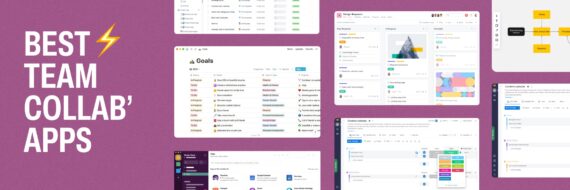Simple vs complex. Lo-fi vs hi-fi. Static vs interactive. The difference between wireframing and prototyping is found in all those comparisons. As far as "wireframe vs prototype" goes and when to use one or the other; think of wireframes as the essentials, the bones of an app or site, while prototypes are functional and interactive versions you build further into the project.
Having a solid understanding of how to use both can work wonders for your product.
The terms "wireframe" and "prototype" tend to be erroneously used interchangeably, but by the time you’re finished with this article, you should have a crystal clear picture in mind of the purpose of each tool and how they help a product development team. There’s no gray area in this one so it’s pretty straightforward.
What’s the difference between wireframes and prototypes?
The main difference between wireframe and prototype is what they’re made up of and used for, both playing a crucial role in website production A wireframe is a low-complexity design tool to help shape and outline the structure of a site’s page layouts. Particularly useful when you want (or need) to quickly visualize concepts when developing a minimum viable product.
Using rapid prototyping tools will bring you closer to the final product and display functionality rather than structure.
Here’s why people think they’re the same though; a wireframe is considered to be a type of prototype — but the differences are pretty stark.
Let’s think about houses for a moment.
When a house is being built, it’s based on a blueprint. This is closely related to the thinking behind wireframes. The design process begins taking shape here. While blueprints are normally some variation of blue and white prints, wireframes are typically presented in grayscale. At this early stage, color schemes aren’t top priority.
Now imagine a model home. Not quite the finished product you’d be living in, but a product design you can actually walk through that provides interactive realness without having to access your deeper imagination. You can go flip the lights, browse the Levolor blind swatches and flush a toilet. That’s your prototype.
So, what is a wireframe? The wireframe gives structure to the visual design and general direction of the user interface on which the prototype is built.

The big difference is a prototype should actually function and be pretty darn close to the real thing. It’s design vs function. Low-fidelity vs high-fidelity. Of course, for an app or website, you’re aiming for clickable/usable features rather than faucets turning on or smaller design elements like the color of the curtains — but the thought still applies.
A quick side note: you may be asking where mockups land in this whole scheme.
The simple answer to the wireframe vs mockup vs prototype conundrum is that low-fidelity wireframes set the structure.
Mockups are a rendering of the final design for the final version of the product, usually in the form of images.
Back to our house analogy for a second, a mockup is what you see at your local big-box home improvement store. Those kitchen and bathroom setups or the photo versions in a demo book. They show off all the shiny products available on the shelves but in the context of a specific room. Bam. Mockup.
Lastly, high-fidelity prototypes are all about functionality.
🎬 Learn what Slickplan can do!
We filmed a short video to show you exactly how to use Slickplan
Wireframe vs prototype comparison chart
Next, we’ll go over the general comparison points and when you’d use each of these tools. This isn’t an exhaustive list but it will help you identify further items and know when to use what.
| Comparison | Wireframe | Prototype |
|---|---|---|
| UI design | ||
| UX design | ||
| Using “lorem ipsum” text | ||
| User interaction design | ||
| User flow | ||
| Stakeholders | ||
| User testing |
Wireframe vs prototype for UI design
When creating the UI design for a product, you’re going to need to start by laying down some basic designs on which to build. Since we know so far that prototypes are a more advanced stage in this process, the winner is clear…
Winner: Wireframes
Wireframes are your base point for designing the UI of a mobile app or webpage. This is the skeletal system you’ll build on top of. The functioning vital organs and muscles, aka the prototype, are further down the line.
For a clear UI definition, see our glossary.

Prototype vs wireframe for UX design
We know that user experience focuses more on functionality and user interaction rather than purely visual appeal so choosing a tool here easily falls into one category.
Winner: Prototypes
Since wireframes march to the beat of the UI drum, you should use prototypes for the user experience designs and interactions of a digital product. SurfHelp, a Chrome extension for minimizing daily distractions during work hours, uses prototypes to do just that. Users can easily get a sense of the product and its functions in mere seconds.
Wireframes vs prototypes and using lorem ipsum
The classic "lorem ipsum" fake language derives from a (purposely) botched rendition of Cicero’s 'De Finibus Bonorum et Malorum' made to look sorta like Latin. It’s really there to take up space and give the look of actual content/copy when the real thing isn’t available yet or the project hasn’t progressed that far but it’s apparent that some sort of text will live in a set amount of space.
Winner: Wireframes
It’s a placeholder text and only has business being used in wireframes. It may seem controversial to be so definitive but there’s a reason though. Wireframes are the winner because even in user testing situations, a tester is never going to see a wireframe — they’re for the design team and lorem ipsum just takes up space where actual usable text will later be added.
Testers may see a prototype but by then the text should be useful to the user. The middle ground here is mockups. You might see lorem ipsum in a mockup but it’s probably just waiting for someone to put the real stuff in.

Wireframing vs prototyping for user interaction design
Interaction design, or IxD, isn’t exactly new in town but recently it’s definitely picked up a lot of steam. It’s everywhere we look in terms of digital products but also has plenty of practical/real-world applications.
Think of it as a more artsy and user-friendly version of "if-this-then-that".
Hitting the button on the elevator and it lights up. IxD.
Receiving a Facebook message and hearing that pop sound. IxD.
Winner: Prototypes
Since IxD involves reactions based on user input, you may have guessed this falls under the UX category which in turn falls under the functionality column. For that reason, IxD and the prototyping tools you use will get a lot of quality time together.
Interactive prototypes can include IxD features like transitions, animations, certain integrations, fonts and color changes and as you learn more about what your product can do, the list continues to grow.
Wireframe or prototype for planning user flow
Even when you’re not specifically working on a task that’s dedicated to user flow, it’s one of those things that should always be in the back of your mind.
You should always be checking in with and planning your flow to make sure things are… well — flowing. The keyword here is "planning".
What does that even mean though?
Since you should always have user flow in consideration, being mindful of planning it is imperative and, there’s one tool that should stand out for the job.
Winner: Wireframes
By the time you get to a prototype, user flow should already be implemented through a workflow that will likely include many wireframe iterations. Changes can and should be made to improve things and provide a great experience, but planning user flow begins in the wireframe stage.

Prototyping vs wireframing for the stakeholders
This is where things can get tricky. There are a few factors that go into deciding which one of these to present to the people cutting checks.
One factor is to determine what kind of skill level your stakeholders have and do they know what wireframes and prototypes are. Naturally, your team members all know the differences but that may be the end of the line.
If the folks with a financial investiture don’t know much about wireframes and you’re presenting them with a rather bare-bones, grayscale, lo-fi, wireframe in Balsamiq, there’s a good chance they’re going to be doing some fast backpedaling.
Maybe a bit of embarrassment.
The product management team should have a good idea of how to liaise between design teams and financial stakeholders.
But who’s the winner here?
Winner: Prototypes
It isn’t that wireframes are the loser in this situation, but the scoop here is that prototypes are just more suitable to a broader audience of stakeholders.
It’ll depend on who you’re presenting it to of course and whether they’re familiar with what a wireframe is and how they even work. Furthermore, they’ll need to know that it’s just a very, very, very basic part of the puzzle (not small enough to skip though) to begin turning design ideas into design reality.
With that being said, prototypes are actually more likely to be shown to stakeholders. They’re interactive, they’re colorful and provide for a great show and tell where stakeholders can get in there and try it out themselves.
It’s the sort of same principle behind why everybody loves going into Best Buy and pushing buttons in the home theater and car stereo section.
Prototype or wireframe for user testing
User testing is absolutely a must-do for any new product, app or website. Getting user feedback from actual users can be extremely valuable and if you need a refresher course on the benefits of user stories, we’ve got you covered.
But one of these tools works way better than the other. Based on what you’ve learned so far, it may be obvious to you.
Winner: Prototypes
If you guessed prototypes, you win a cookie.
Wireframes are not public-facing and have no need to be shown to users. Wireframes can stay put inside of your InVision, Figma, Adobe XD and Balsamiq accounts.Some of those options also offer rapid prototyping in the same suite but as for ever showing wireframes to a user, forget about it.
*With InVision shutting down at the end of December, 2024, locking in an alternative is critical.
Share & refine designs with Slickplan
Add mockups from Figma or your computer to ensure UX/UI is moving in the right direction.
Our conclusion on prototype and wireframe use
Prototypes and wireframes are longstanding and reliable tools that are guaranteed to be around in some form or another for years to come.
Why?
They get the job done in the simplest yet most efficient way possible.
By now we hope you’ve learned two big key points: that they’re not the exact same tool and what they both do for the design process.
As a reminder, you have to wire a house before you can use it. Similarly, you need to wireframe a project before a prototype can be built around it to use.
If you’re looking for a list of the best prototyping tools (yep, it includes wireframes) you can take a look at our list there. Don’t be afraid to try different tools to see which ones work best for you and your needs. You should be comfortable with your choice because you’re going to be using it a lot in this line of work — but luckily there’s something for everyone.






 X
X

